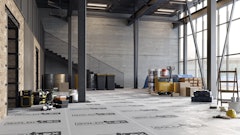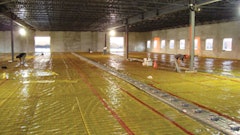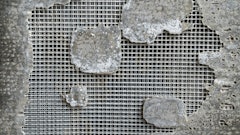
Be in guidelines or requirements, all details of what a job requires should be found within the scope of work. When there’s a specification on the floor flatness (FF) and floor levelness (FL), Concrete Contractor spoke with Nick Demonte, ITF cement mason coordinator from the OPCMIA to find out how one begin working toward achieving those higher numbers.
To start, the biggest criteria is understanding the concepts involved. OPCMIA trainings start with a demonstration of determining the tolerance of a slab by using 10 ft. straight edge. While this straight edge does not correlate to the FF numbers, it provides a visual effect of the tolerances of the end goal.
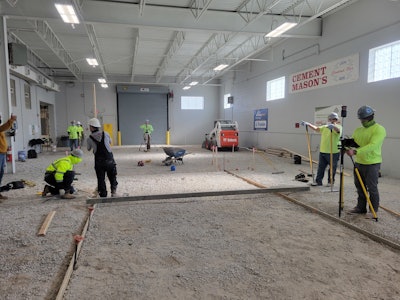 Operative Plasterers' & Cement Masons' International Association
Operative Plasterers' & Cement Masons' International Association
At least that’s how it was once done. Today, contractors have some more modern types of measuring devices to use. For one, the Dipstick Profiler from Face Companies developed by Allen Face. Contractors can also use an inclinometer to measure the floor and produce a profiler graph, or utilize a 3D scanner.
The introduction to the 3D scanner to this process helps contractors respond more proactively to the situation. “Prior to the 3D scanner, the only way you could measure the floor was after you had poured it,” says Demonte. “After you poured it, and you finished it, you got 72 hours to measure the floor within that timeframe. But using a 3D scanner and how technology has improved, we can hook the 3D scanner up and get a scan of that slab within seconds of all different types of points."
With this technology, contractors would be able to recognize if an area was too high and correct it on-site as they’re pouring as opposed to later and grinding the areas down or filling them.
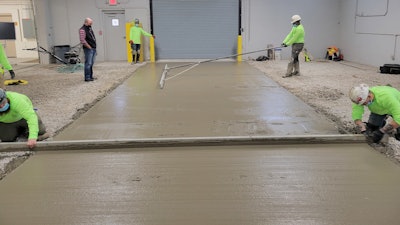 Operative Plasterers' & Cement Masons' International Association
Operative Plasterers' & Cement Masons' International Association
“That’s going to help production if we don’t have to come back and treat the slab in any kind of way…because these tolerances are hard to achieve it takes a special skill set to do that. It starts from the formwork and so on down the road – there are a lot of variables that move in there. Training is the biggest key to putting down super flat floors—training your eye to the finer details.”
One of the biggest keys here is recognizing the skill needed to ride a ride-on trowel machine: how and when to get it on the floor, when and why to use pans instead of floats, as well as gauging the angle of the blades.
Critical Details
- Forming
- How you pour the concrete
- The equipment used to finish; consider the setup and fine-tuning of the laser-guided screed; the patterns from the ride-on trowel machine and how they’re going to cross; the direction used with a vibrating screed vs bump cutter
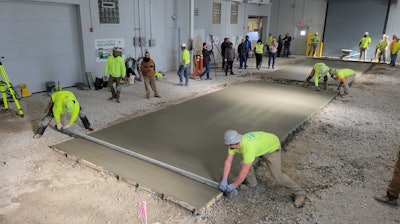 Operative Plasterers' & Cement Masons' International Association
Operative Plasterers' & Cement Masons' International Association
Polishing is another matter completely. If the floor will need to be polished, it’s important to consider the relationship between the finish and FF value. For example, depending on the finish some polish classes may need a certain tolerance. Demonte explains that many of the seminars they produce goes through the importance of trying to achieve those FF numbers when delivering a polished finish.
Timing and know-how is essential. Plan and keep track of the order of pours while noting shady vs areas more exposed to the sun. “There are a lot of moving parts about super flat floors. It’s not something that a contractor just takes on to try and see if they can get into this work,” says Demonte. “The best way to start—the easiest way to start is…reach out to your local [union].”
He recommends contractors is to do a little homework. The finishing industry has been working to make the language more universal so that the classification and levels of gloss are more coordinated. Part of that homework is also communication and being involved. If you’re the polisher for a job, attend the pre-conference meeting so you know what mix is used, how the floor will be finished—all the important details to achieve a quality floor.




















